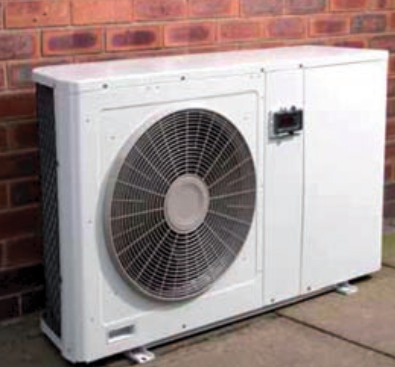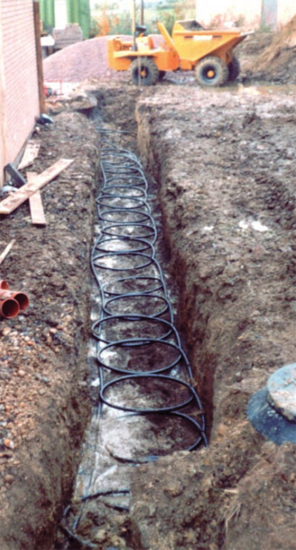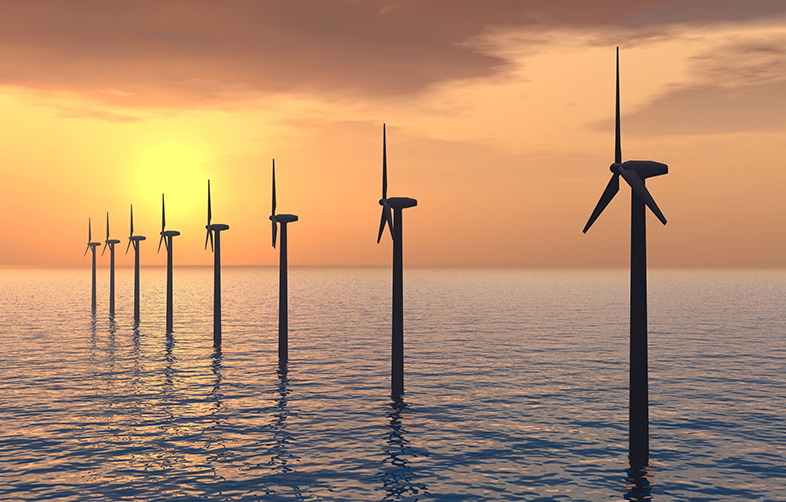8.1 Air and ground source heat pumps
There are two main types of heat pump:
Air source heat pumps
In buildings, a heat pump may be used for heating or for cooling (air conditioning). When used for heating, the evaporator is located somewhere in the external environment.

An air-source heat pump, such as that shown in Figure 19, is likely to have a fan blowing external air over a coil-type evaporator unit.
Ground source heat pump
These heat pumps use evaporator pipes usually buried in a shallow horizontal trench surrounding a building as in Figure 20. Alternatively, they may be laid in a vertical borehole 10 metres or more in depth.

Heat is then pumped from the outside environment to a compressor inside the building, normally connected to its central heating system. Electrical energy is required to operate the compressor. The ratio of the heat output to the electrical input is known as the coefficient of performance (COP). For systems in the UK this typically has a value of 2 to 3.
In an air-source heat pump, the heat that is drawn from the external environment is taken immediately from the outside air, cooling it in the process. In a ground-source heat pump, the same process takes place, but by cooling the ground (by only a degree or two).
Can the heat from heat pumps be classed as renewable energy?
